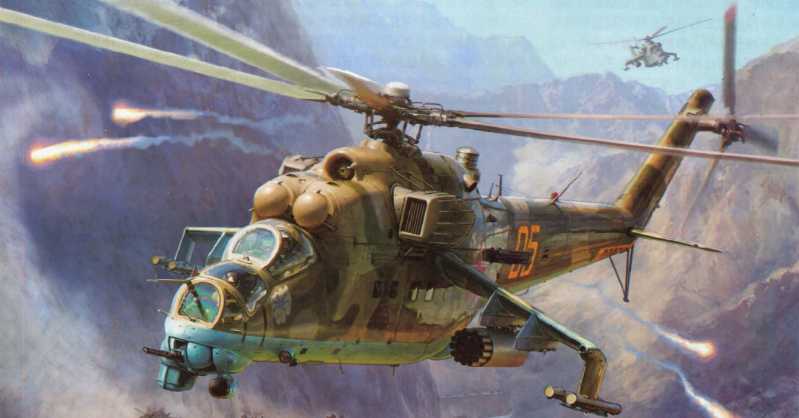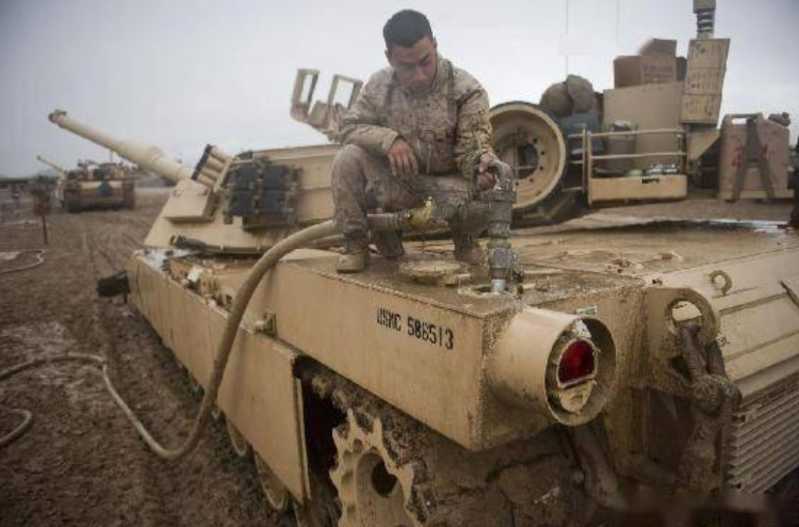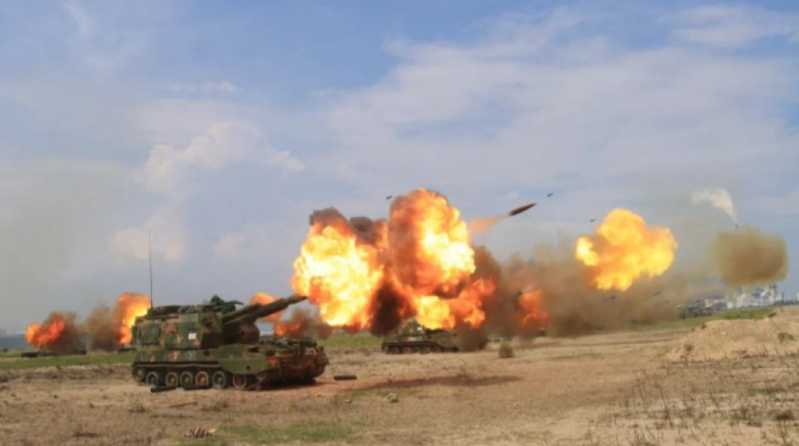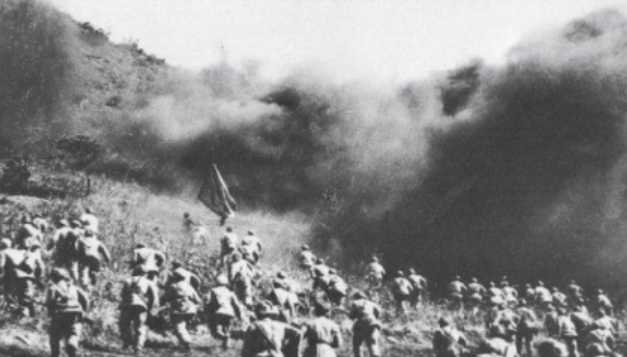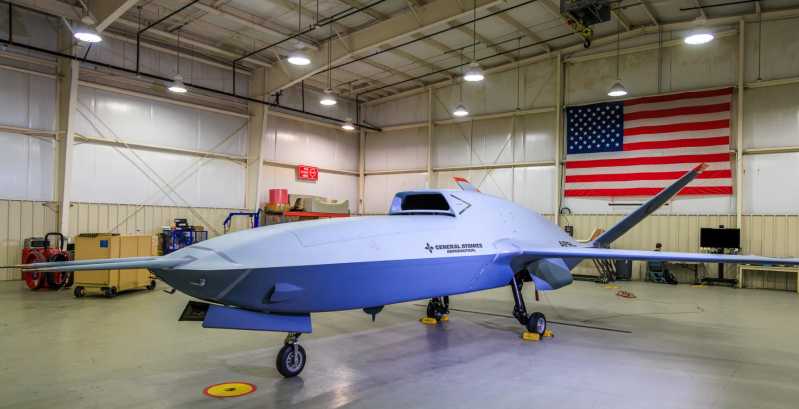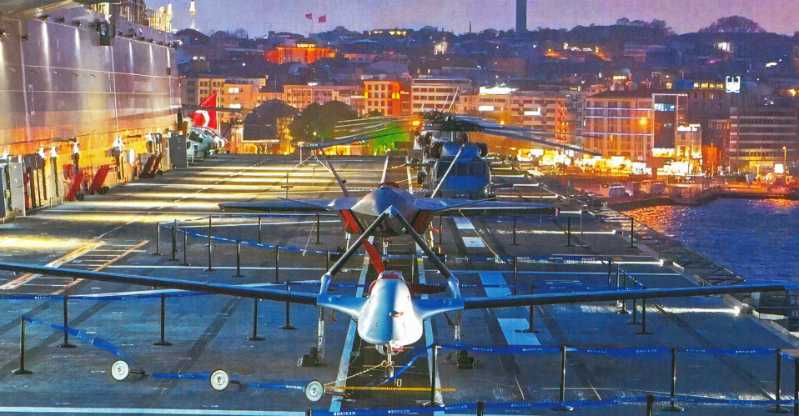Purgatory Chariot
Assuming that the Soviet Union had not collapsed in 1991, the Mi-28 should have been officially put into service at least 10 years earlier, and perhaps even in time for the Chechen War. However, if this were the case, the serious situation of division in many places would not have occurred so early. At the beginning of the first Chechen War, the Russian Federation Army could mobilize only a handful of Mi-24s, and pilots were even more scarce. They could only hire local pro-Russian soldiers to fly helicopters. Starting in late September 1994, some Mi-24s were used to bomb the airport of Dudayev’s troops for nearly two months, destroying some of the opponent’s aircraft and facilities. After the separatist armed air force was basically eliminated, the focus turned to the ground armored forces. On November 23, 21 tanks and 14 troop carriers were destroyed in one go, causing a large number of casualties among the rebels. The Mi-24 piloted by a local hired pilot shot down a transport plane that fled to Azerbaijan in early December. Later, the Mi-24 was also used to launch a strong attack on the village of Bamut and the intercontinental missile base that was converted into an armed stronghold. It was also seen in the hostage rescue operation in Kizlyar.
The two squadrons used in a concentrated manner (including Mi-24B, -24P and -24BP) were mainly used in conjunction with the Mi-8T/-8MT of the other two squadrons. In the later period of the war, they were mostly used for counter-insurgency operations. The Mi-24 was more prominent in the southern battlefield. In addition, it was frequently used for personnel evacuation and ammunition transportation. According to the relevant arrangements of the Army Aviation, nearly 70% of the time was used for real combat, but this standard was obviously not met in the early stage of the war. In the later period, because Grozny was captured by the federal army, the Mi-24 was not very useful. Due to the low navigation means and outdated communication equipment, the combat efficiency of the Mi-24 was greatly reduced. It could basically only sail under ideal weather conditions during the day (horizontal visibility exceeded 1.5 kilometers). The Mi-24 could usually only attack pre-selected targets such as ammunition depots and armored vehicles. Temporary hunting operations were not allowed. A group of veterans of the Air Force and Army Aviation who had participated in the Afghan War were selected to serve as forward air commanders (FACs), playing a good role. However, the work of air commanders is very dangerous. The rebels have relatively complete radio scanning equipment that can quickly intercept the Russian air communications. In addition, a large number of Mi-24s are not equipped with sufficient electronic countermeasures equipment, and are often in an embarrassing situation where they are attacked as soon as they show their heads.
The information collected by the commanders is analyzed and processed by the Army Special Forces and sent back to the headquarters as soon as possible to form decision-making instructions. However, sometimes the headquarters’ instructions puzzled the front-line soldiers, especially the repeated missed opportunities to destroy the assembly points, which led to the passive attack on the side. There were also some problems in coordinating with ground forces. The army marking targets for the air force often received a beating from friendly forces. Sometimes the marked location was not discovered by the helicopters of the army, but Dudayev’s troops took advantage of it. The long-term storage of weapons resulted in poor safety, especially the repeated self-inflicted mistakes of airborne rockets, which made pilots and friendly forces on the ground nervous. The Chechen rebels, supported by Western anti-Russian forces, often used light anti-aircraft weapons to launch sneak attacks on Mi-24. In the first half of the war, most of the four Mi-24s lost were shot down by anti-aircraft machine guns, and the probability of survival of the crew was not ideal. In short, the Russian army exposed too many shortcomings and mistakes in the first Chechen war, and signed an armistice agreement in an almost humiliating way. In the following years, the situation remained turbulent, and various terrorist activities continued to increase and intensify.
But the ceasefire gave the army a chance to breathe. The Russian authorities also realized that the war would break out again sooner or later, so they took the time to reorganize their armed forces and actively prepare to recover lost territory. In August 1999, the Chechen bandit army launched a sudden attack on many places in neighboring Dagestan and occupied them, attempting to turn the state into a second Chechnya. They even placed bombs in major cities such as Moscow, killing hundreds of civilians. The Second Chechen War quickly broke out. The Russian Army Aviation officially entered the battle on September 23. Among the 68 helicopters involved in the first phase, nearly half (32) were Mi-24s. Most of the personnel and equipment came from the North Caucasus Military District, with a total of about 140 people (excluding ground crew). The Russian army’s multi-pronged simultaneous attack forced the rebels to withdraw to the southern part of Dagestan, but the fierce exchange of fire between the two sides put tremendous pressure on the helicopter unit, forcing the Russian military command to make deployment adjustments. The Russian army deployed a total of 38 helicopters in the east, north and west. In addition, there were mobile units (30) in Mozdok in the north. The Mi-8 and Mi-24 formed a flying squadron, following the ground forces to advance steadily and step by step.
The fleet maintained 4 to 6 hours of aerial patrols every day. Except for reconnaissance flights, it basically did not take off at night, even if the visibility was good. The number of enemy soldiers killed was no longer the focus of pilots, and the figures reported by the media were also different, sometimes even contradictory. However, the destruction of hard equipment such as vehicles and supplies was always counted quite rigorously. The helicopter troops and fixed-wing fighters worked closely together, and the combat efficiency was greatly improved compared with the first war. Many rebel strongholds, headquarters, ammunition depots, and satellite communication points were quickly removed, and important towns in Chechnya were also "greeted" one by one by the Russian aviation. More importantly, on November 25, the "Caucasus Intelligence Center" responsible for recruiting personnel for terrorist groups also became the target of the Mi-24 attack. Grozny, the rebel’s old nest, and the surrounding areas were no longer a safe haven. However, the war had entered the most brutal and intense stage at this time. The end of the millennium was hopeless. The Mi-24 made at least dozens of sorties every day, and the soldiers’ physical strength and willpower were greatly tested.
When not carrying out escort missions, the Mi-24 would also perform hunting and killing missions, randomly searching for rebel hiding places, oil depots, ammunition depots, temporary facilities and illegal processing plants, and before launching a formal attack, it had to confirm that there were no civilians among them. The number of Mi-24s in a tactical air group is usually twice that of Mi-8s (up to 4 Mi-24s are incorporated into 2 Mi-8s), and the manned cabin proved to be a very useful design in the Chechen War, and usually carried special forces of the Ministry of Internal Affairs to perform secret missions. The number of forward air commanders is limited, and they are only deployed at the regiment level (preferably in each company), and their professional skills are flawed, which often causes complaints from pilots. However, there is a Mi-8 in the formation anyway, and its crew can provide precise target coordination. In addition, in the event of a crash, the transport helicopter can be lost and used as a search and rescue platform. The embarrassment of backward avionics has not been fundamentally solved. The navigation equipment of the Army Aviation helicopter is poor, and the Mi-24 fleet can only complete navigation through terrain features and reference landmarks. The communication system is even more fatal. The crew’s calls have been repeatedly intercepted and interfered by Chechen armed forces, which has brought great inconvenience and risks to the troops’ operations, and the confidential communication equipment is seriously insufficient. Since April 1999, in more than a year, the Russian army has lost a total of about 11 Mi-24P/Bs, many of which were ambushed by rebels, and some were crashed into mountains due to operational errors. The reasons for the increase in errors are one is excessive mental pressure, and the other is lack of experience. In order to maintain morale and combat effectiveness, a shift system is needed, but no more than 30% are replaced each time to maintain a situation where there are enough veterans leading the team.
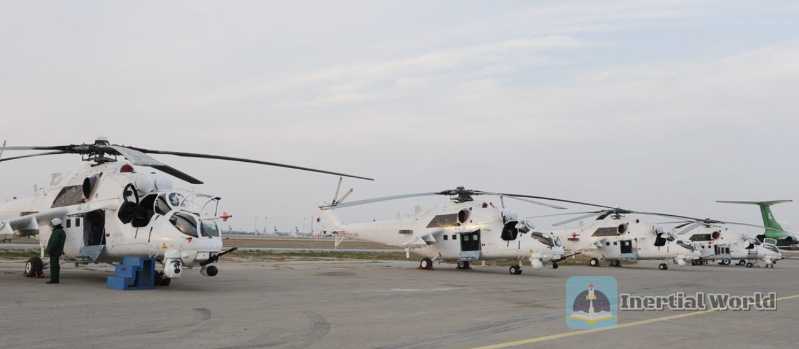
The Chechen rebels did not receive a large number of shoulder-fired missiles from the US military. They mainly used Soviet-made light weapons to attack the air. Even 5.45mm assault rifles could frequently hit the Mi-24. The engine and main reduction gearbox are the most resistant to attack, but the reduction gearbox oil system and hydraulic equipment are the most vulnerable to damage. Sometimes being hit can even cause the aircraft to be destroyed and people to die. The middle of the fuselage, the blades and the tail boom are also particularly easy to be hit, although in most cases they cannot pose an effective threat; the anti-icer and cooling fan, as well as some avionics equipment such as the radio, altimeter and Doppler sensor are all unreliable. The self-sealing fuel tank is not worthy of its name. Even a small-caliber rifle can penetrate it, and it is not leak-proof at all. It takes two full days to replace a damaged fuel tank. The rotor and tail rotor are the most consumed and worn, and the troops lack the corresponding means to replace and repair them. They can only set up a special maintenance point in Mozdok. Of course, the service content is not only to replace the rotor, but also to undertake the maintenance of avionics, pipelines and other equipment. The helicopters that are too damaged will be transported away in time by the Mi-26 on standby at any time, and those that cannot be repaired will be dismantled into spare parts as soon as possible.
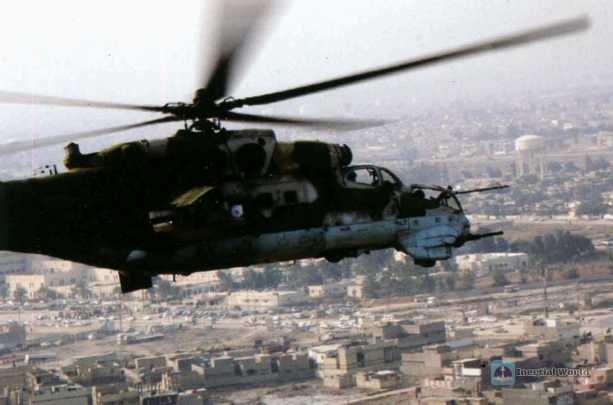
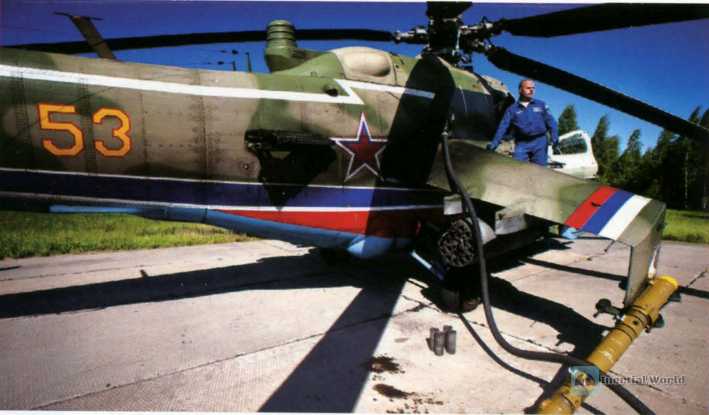
35 is a sacred number
The lessons learned at the cost of blood in the war can always be used in the transformation of active weapons at the first time-the Moscow Helicopter Factory raised funds to design the Mi-35M concept upgrade in the mid-to-late 1990s, and the Mil Helicopter Factory provided technical support. The first prototype upgraded at the Moscow Helicopter Factory made its first flight on March 4, 1999, and was publicly unveiled at the Paris Air Show two years later, and was quickly recognized by the Russian government. The aircraft uses a new rotor and fixed landing gear. Generally, the short wings of the fuselage can "reduce the burden" of the main rotor, but it will reduce lift when hovering or flying at low speed. Therefore, the Mi-35M first chose to reduce the short wings. Although the number of pylons on each side has been reduced to 2 and the wingtip folding has been cancelled, each pylon can be equipped with a quadruple composite missile launcher. The weapon hanging capability has not been weakened, but has become more compact.
Obviously, the Mi-35M is to fundamentally change the "night blindness" shortcoming of the Mi-24 family. At that time, it was promoted as an ultimate product. It can become a model for new helicopters in the future, and it can also be split into high-end upgrade components to update the old Mi-24. In other words, all the new equipment on the Mi-35M, as well as power, weapons, rotors, etc. are provided by building blocks, or "upgrade modules". Users can choose individual projects or bundled combinations according to actual needs and budget levels.
First, in the Module-1 stage, the specific conditions of each aircraft are fully inspected, and a comprehensive service life extension plan is formulated, which can be simply classified as "personalized overhaul".
Module-2 uses the main rotor and hub of the Mi-28 to replace the rotor of the old aircraft, and the blades are replaced with composite materials. In addition, there is an X-shaped tail rotor. If it is not thorough, simply replace the engine together-the upgraded Klimov B K-2500 is particularly suitable for high temperature and plateau environments.
Module-3 involves a number of improvements to the fuselage, such as shortening the short wings and changing the landing gear to non-retractable (the speed is only reduced by 11 kilometers/hour). Through comprehensive efforts, the total weight is reduced by about 600 kilograms. In this way, its maximum ceiling under standard conditions can reach 3,100 meters, and the climb rate is increased to 12.4 meters/second.
The weapon components are mainly put into the module-4 stage, mainly removing the "Phalanx"-P and Strike-B, and replacing them with the more advanced 9M120 "Attack"-B, which can be hung on each wing tip. Attack-B was the supporting weapon project of the Mi-28 at that time, with a maximum range of 5.8 kilometers, and its tandem warhead can penetrate 850 mm homogeneous steel armor. In order to deal with drones and enemy helicopters, the short wings can also be arranged with twin launchers for launching 9M39 "Needle"-B air-to-air missiles.
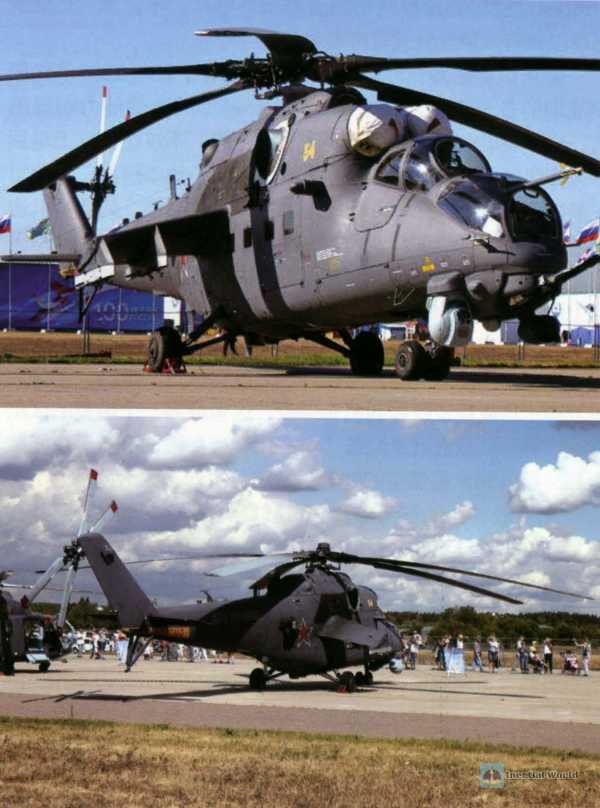
Another option is to replace the quad machine gun with the ГШ-23 twin-barreled cannon, which was originally reserved for the Mi-24B in the late 1980s. In addition, it can also be equipped with a 122 mm five-round C-13 rocket nest. The most expensive upgrade package is Module-5, which has perfect day and night and bad weather operation capabilities, but due to the lack of relevant digital avionics systems in Russia in the mid-1990s, this program can only rely on Western equipment in the early stages. From 1995 to 1997, the Mi-35M that appeared at major air shows attracted visitors in various ways, equipped with advanced Nadir-10 navigation systems, and avionics equipment with night operation capabilities jointly built by Thales and Sextan Avionics. The core equipment is the Chlio forward-looking infrared radar of Thomson CSE Optics installed in the gyro-stabilized turret on the lower left side of the nose. The cockpit is equipped with a TMM 1410 display (for forward-looking infrared radar and navigation information), and the front and rear cockpits are equipped with VH-100 heads-up displays and SMD liquid crystal displays.
However, the high-priced Module-5 failed to win the slightest interest of any customer. After all, those who purchased the Mi-35 helicopter were not financially well-off, so the project could only end in failure. However, there are customers interested in the upgraded version of the Mi-35P. Cyprus purchased 12 Mi-35Is (nicknamed "Black Panther") equipped with GI-30 cannons, which is equivalent to some Module-3 plus night vision cockpit lighting. The delivery work lasted for two years from 2001. Somewhat unexpectedly, Venezuela in South America became the first South American customer of the new modification in July 2006, ordering a total of 10 Mi-35Ms (spending about US$400 million). The Venezuelan Air Force gave it the nickname "Caribbean" (the name of an Indian tribe), and the relevant words were painted under the nose. The version they purchased is basically a mix and match, some of which are Module-1, and even some of Module-5 are integrated.
In terms of origin, the Mi-35M can be traced back to the Mi-24BM launched in 1995 based on the Mi-24B. However, the production of the Mi-24B is very small. Its significance lies in the fact that it has made great progress in cockpit instruments (glass cockpit) with the help of the latest computer system technology, and analog equipment has been collectively laid off. In general, the biggest progress of the Mi-35M is that it borrowed the rotor system of the newly developed Mi-28. The rotor head and hub are made of titanium alloy, and the main body of the blade is made of fiberglass composite material. This rotor is not only lighter, but also more durable. It is estimated that it can still operate even if it is hit by a 30mm shell. In order to reduce weight, the original retractable landing gear was changed to a fixed design. The quadruple launcher became standard on the Mi-24IH and Mi-35M. The launcher that can carry 8 Attack-B missiles has also become a reality. The P-60M air-to-air missile launch rail layout has not been promoted externally, but the Mi-35M is compatible with the six-unit Needle missile launcher.
The reason for developing the -24ПH is that compared with the many European and American armed helicopter models that emerged in the late 1980s, the night combat capabilities of various types of Mi-24 were obviously outdated, and this shortcoming was fully exposed during the Afghan War. However, the Soviet Union collapsed shortly after the project was launched, and related work stagnated for many years. It was not until around the millennium that the initial start-up funds were finally raised, and the Mi-24ПH plan was able to move forward. In fact, the aircraft can only be regarded as a transitional project, but there are many improvement projects. The most critical point is the use of a fully stabilized "Weak Light" III night vision system with a laser rangefinder, which is the predecessor of the "Nocturne" thermal imaging device used on tanks. At first, the night vision system was planned to be installed in a pod under the short wing, but the military flatly refused on the grounds that it would affect the mounting of weapons, and in turn the lateral field of view of the night vision system would be blocked by the fuselage. So later it was decided to install the night vision equipment on the nose, which also became an important distinguishing mark. Another improvement is the "slanted triangle" night vision goggles. When the pilot wears them at night, there is no big problem in terrain following flight at an ultra-low altitude of at least 50 meters. The most mysterious model so far is the Mi-35MC. The outside world noticed its existence in 2013, when the prototype had just completed a test flight in Rostov-on-Don. According to experts’ estimates at the time, only three were built. Its function may be different from all previous modifications. It is likely to be a command and control helicopter, similar to the Mi-9 of the year, while some experts believe that the aircraft should be an electronic warfare aircraft. But in recent years, more opinions tend to be: This is a special aircraft for VIPs at the same level as the US Marine Corps’ No. 1, and it may even only serve Putin himself. There is a large fairing under the nose, which is very similar in shape to the nose radome of the Tu-95, and may be used to arrange communication equipment. In addition, the portholes of this aircraft are larger than those of the general Mi-24 military version. Judging from the light green paint of the aircraft, it is indeed different from the general Russian Mi-24. The tail also has a tricolor flag logo, and the displayed digital number is also a civilian number segment. A little later than the Mi-35MC, there is also a -ПCB project (also called MiX-1). The prototype modified from the Mi-24K debuted at the 2015 Moscow Air Show. The blue striped civilian paint makes people curious. This MiX-1 has a round and slightly protruding nose, and a bit of a pointed monkey face. What’s more special is that it actually has no short wings. Many people speculate that this is a private car built by the Mil Group for the rich. Of course, this is not the case. The ЛЛ-ПCB is a technology demonstration aircraft. Moscow calls it the "Future High-Speed Helicopter Flight Laboratory", which is exactly the meaning of the abbreviation ЛЛ-ПCB. The government funded the project with 630 million rubles, aiming to study the technology of future high-speed helicopters (1.5 times that of existing models). The prototype completed its first flight on December 29, 2015, with the crew including test pilot Vladimir Kutanin and test flight engineer Tadiana Demyanenko.
The aircraft has replaced the BK-2500M turboshaft engine, adopted a single-person cockpit (retaining the engineer’s seat), the main blades have been completely redesigned, and the latest composite materials developed by Mil Moscow Base have been selected. The aerodynamic performance is impressive, and the purpose of the test flight is to verify the experimental data measured by the wind-driven model. If the project is successful, its technical achievements will be used for the current model helicopters as soon as possible. The goal of the first phase is to achieve a maximum speed of 250 miles per hour (402 kilometers), and the second phase plans to reach 280 miles per hour (450 kilometers) or even higher. Although the fuselage has not yet deviated from the basic structure of the Mi-24, the difference is also very obvious in order to minimize the resistance as much as possible to meet the high-speed flight. However, the future Russian armed helicopters have not yet considered the built-in weapons, so in early 2016, people found that the short wings that had been cut off were back, and they also brought two pairs of auxiliary fuel tanks. It is said that the aircraft has broken the conventional layout helicopter speed record of 400.7 kilometers per hour created by the Lynx helicopter.
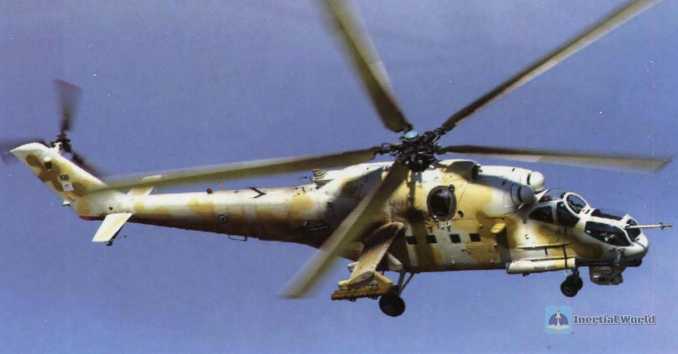
The export type also includes the Mi-35D series, and the weapons and subsystems are from the Ka-50, including the Storm fire control unit, the Saturn forward-looking infrared radar and the Cyclone anti-tank missile. The types are divided into three types: 1, 2 and 3. However, the project was cancelled shortly after its existence. It may be that the Mil and Rostov factories prefer to work on the engine-using an engine with a 10% increase in power, a working life of 7,500 hours, and a longer overhaul interval. This jointly developed project redesigned both the main rotor and the tail rotor, and there were also a lot of changes in avionics, mainly products from Romanskoye and Kronosnogorsk.
In the case of an unfavorable economic situation, the Russian Air Force can choose a more cost-effective limited upgrade plan to meet the night combat needs of the transition period, just like the Russian Air Force. By 2005, the Russian Air Force had completed the production and renovation of at least 16 aircraft, mainly responsible for the domestic defense mission. This is the Mi-24PH (the suffix letter represents the night combat model developed on the basis of the Mi-24P), and it was soon put into actual combat. The power, fuselage and blades have been improved to a certain extent. Its cockpit can meet the use of night vision equipment, equipped with BPEO-24 navigation components, and both the front and rear cockpits have color LCD displays. It is also equipped with a precision navigation system (with a satellite navigation receiver). The first batch of 5 Mi-24Ps were refurbished and extended by the Rostov Helicopter Company and returned to the Air Force in January 2004. According to informed sources, the cost of upgrading a single aircraft is about 1 million US dollars.
The pilots wear domestic OBH-1 night vision goggles, coupled with good cockpit lighting equipment, which meets the needs of night operations and can maintain ultra-low altitude flight of 50 meters in the dark. The core of the night fire control system is the product of the Krasnodar Optical Machinery Plant: the 9C47H Zazhevoyya gyro-stabilized night vision aiming system, which is installed in the nose chin-type fairing. It is actually a subsequent improvement of the "Serenade" night vision device used by main battle tanks. The aiming system is mainly an infrared sensor with a laser rangefinder, plus an infrared angle meter for anti-tank missile guidance, and integrates the standard "Rainbow"-Ya radio guidance device. The first to receive the aircraft in 2005 was the Crew Conversion and Combat Training Center (334 Squadron) in Torzhok, with the task of training instructors and front-line pilots in night flight capabilities. Later, the 487th Independent Helicopter Regiment in Budyonnovsk also received the first batch of 4 aircraft. This place is close to Chechnya, and it is obvious that the choice to deploy to this unit first was after special consideration.
According to the plan, these Mi-24PHs have been extended for 10 years of service, with a cumulative increase of 1,000 flight hours. According to the helicopter factory advertisement, the combat capability is 1.5~1.7 times higher than the standard Mi-24P. It is said that it received foreign orders in February 2004. Later, it was revealed that it was Uganda that only purchased one, not the six that were originally rumored. The Rostov company also confirmed the news. A veteran who had experienced the Mi-24HP helicopter was interviewed anonymously by the media. He believed that the aircraft was not as good as originally expected, and the company was suspected of exaggerating the publicity. First of all, the nose was slightly heavy after adding night vision equipment, so a 60 kg counterweight was added to the end of the tail beam to balance it. The upgraded -24HP was not a lightweight modification, but a full 280 kg heavier than the 24. As a result, the maximum speed of the aircraft dropped by about 40 km/h, that is, only 260 km/h, and the range of airborne weapons selection was smaller. Say goodbye to C-5, C-24 rockets, free fall bombs and PБK submunitions/mine dispensers. The unguided weapons only have two types of C-80 and C-13 rockets, plus the yIK-23-250 gun pod.
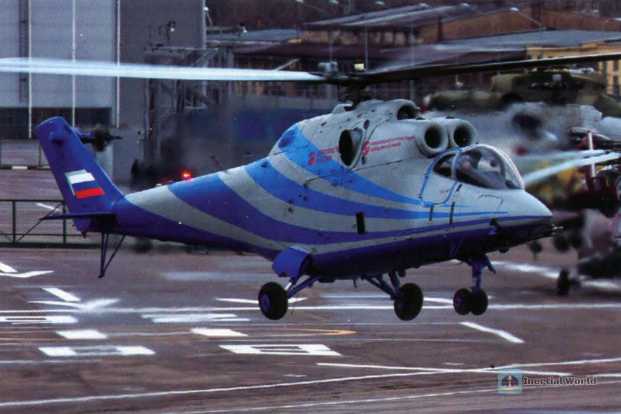
The proud airborne avionics are not so good: the field of view of Zarevo III is very narrow, and it can only aim at a range of 15° to the left and right, which is far less than the allowable range of the latest gyro-stabilized gimbal. It is also very delicate and can be easily damaged by foreign objects such as sand and gravel during taxiing. The performance of OBH-1 night vision goggles is poor, far behind similar Western products. Of course, there are also some remarkable points. The new aiming system uses a good automatic range correction device, which can introduce the distance data obtained by the laser rangefinder. The accurate shooting distance of the C-8 rocket can reach 3 kilometers. Therefore, the Russian Avionics Company later developed a more advanced self-use Mi-24PK-2, equipped with the KH9И-24 digital avionics component developed by the Russian Avionics Company, and its core load is the yOM3TO9C-342 system. Behind the circular glass below is the French Sagem company’s rainbow forward-looking infrared radar (the production model will be replaced with a low-cost Russian-made device), the upper rectangular window is the laser rangefinder aiming lens, and the smaller one in the middle is the TV camera (circular window) and the attack/assault missile tracking optical device (infrared goniometer). The forward-looking infrared radar can detect tank-sized targets 4 to 6 kilometers away at night, and the maximum effective range of the daytime TV channel is 10 kilometers, which is at least 30% higher than the Zarevo system. The device conducted an anti-tank guided launch demonstration in 2001. The night vision device can also use the better-performing "angle" III, with a field of view of 40°. Combined with the A-737-00 satellite navigation receiver, it is compatible with GPS and Russian-made GLONASS (integrated into the existing ДИCC-15Д Doppler sensor), and the navigation accuracy is greatly improved.
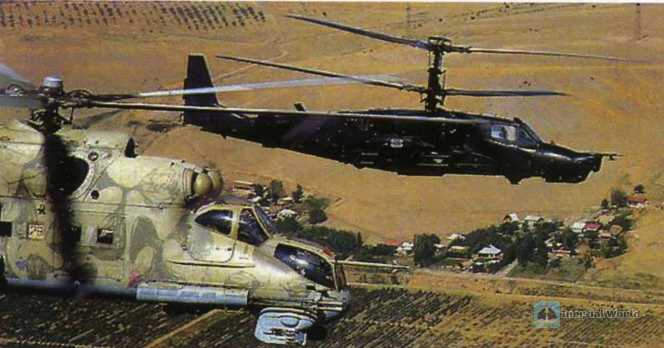
The picture shows the Ka-50 "Black Shark" and the Mi-24 "Doe" flying side by side. After the collapse of the Soviet Union, Russia vigorously promoted the Ka-50, but the results were not good.
There is also a low-cost -24PK series relative, the Mi-24BK-2, which is also equipped with the KH9И-24 digital avionics component, but it is relatively simplified. The three prototypes (Mi-24BM) allocated in the first phase completed the test flight in 1999. The first one only replaced the engine with TB3-117BMA-C63, the second one began to test the optoelectronic turret, and the third one replaced the full set of rotors and tail rotors. The BK-2 is not much different from the BK-1 in appearance. Like the Mi-35M, it is equipped with 9K120 missiles and ГO9C-342 turrets. The main difference from the ПK-2 is that it uses a chin-mounted aircraft cannon and is equipped with a Sagem thermal imaging camera (which can be replaced by the Russian-made OПC-24 system), a television camera, a laser rangefinder, and an infrared crystal goniometer (to meet the requirements of night missile launches) in the optoelectronic turret. The forward-looking infrared radar, cockpit night vision system, and various advanced navigation systems are basically the same as the ПK-2. However, almost all of these upgrade projects have progressed slowly and stopped and started. The main reason is that the Air Force is somewhat indecisive and has a large funding gap. Since 2005-2006, the funding for major armed helicopter projects has been tilted towards the initial production model of the Mi-28H, and the repairs of the Mi-24 seem insignificant.
At that time, the Mi-24BM was busy with national acceptance tests and failed to catch up with the 1999 Moscow Air Show. It could only find a later Mi-24B to take over the flight performance. At the same time, in order to make up for the vacancy, Mil announced the development of two new modifications: Mi-240/-350 and Mi-24H/BH. The former is equipped with third-generation night vision goggles, improved internal and external lighting conditions, and a moving map LCD display in the cockpit. It is also planned to add thermal imaging equipment, low-light night vision cameras and aiming components. There is nothing special about the weapon system and basic performance. The model of the Mi-24BH (without rotors and tail rotor) was publicly displayed at the 1999 air show. It is roughly similar to the Mi-24H. The Russian side claims that it is not inferior to the Longbow Apache. The main selling point is the newly developed navigation/flight instrument/sighting components, which is the TO9C-342 gyro-stabilized optical system of the Ural Optical Mechanical Plant (located in Yekaterinburg). It is installed in the spherical turret at the lower right corner of the nose, replacing the standard Rainbow-Ф system. At that time, the Russian army was busy with the Second Chechen War and urgently needed helicopters with outstanding night combat capabilities, but it was impossible for the Ministry of Defense to pay for new aircraft. The financial situation was still very serious at the time.
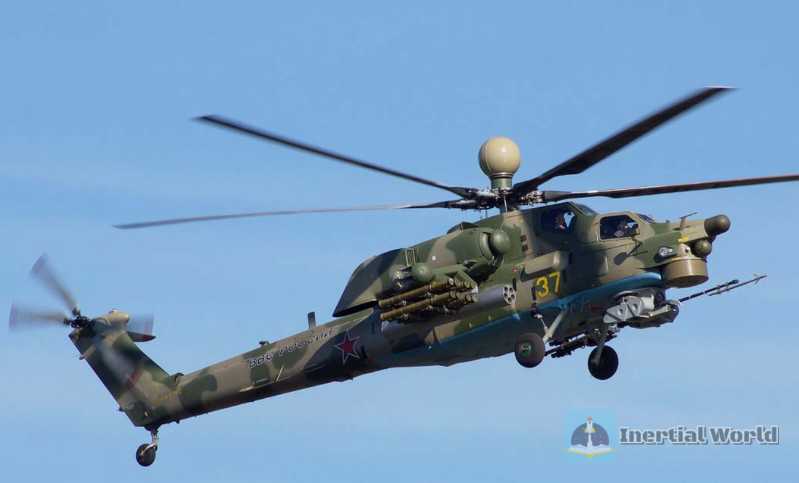
The choice of "loyal ally"
Like many Soviet key equipment, NATO was full of unknown fears about the Mi-24 when it first came out, and was always used to exaggerating its performance in various ways, describing it as omnipotent and beating all similar Western models in seconds. In the late 1970s, the United States established a large training center near Las Vegas, which was specifically used to simulate the tactical actions of Soviet combat forces and practice the Third World War in the minds of Americans. The Army’s imaginary force OPFOR is the abbreviation of the enemy force. To understand the opponent’s tactics, you have to study their equipment, but it was quite difficult to get the newer Army Aviation equipment at that time, especially the advanced model like the Mi-24, which was still in a highly confidential state. In desperation, they could only use UH-1 to hang a few radar transmitters to simulate the signal of the Mi-24. But this low-level method was extremely ineffective, so it was quickly decided to use the Sikorsky S-55 to "cut" out one, nicknamed the "’Doe’ Lookalike", which simply looks like it.
Such a "lookalike" is very different from the Mi-24 in performance, and the effect can be imagined. However, in 1985, the US military finally got a hold of a Mi-24, or more accurately, a Mi-25 exported to Libya - captured by the French on the battlefield in Chad. The US sent its best pilots to check the pulse of this precious aircraft. Although they were a little uncomfortable at first, the pilots soon got to know its temperament and praised it as the best helicopter he had ever flown. Such a precious opportunity became readily available in just a few years. The dramatic changes in Eastern Europe led to many Soviet-made equipment of the former mortal enemy to join the Western camp. The United States bought a large number of Mi-24s at a low price as imaginary enemy equipment, two of which came from unified Germany. Even American pilots were later sent to Afghanistan and Iraq to train these regular users on how to use the Mi-24 correctly. This is really a great irony!
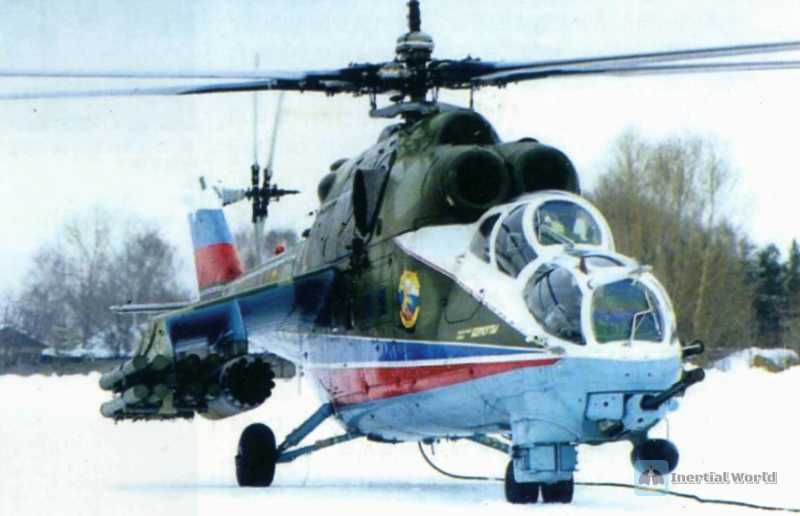
During the confrontation between the two camps, the Soviet Union required its Eastern European allies to strengthen their air force armaments and undertake more critical attack missions. In the early 1970s, at its urging, the East German authorities, which were most trusted by the Soviet Union, established the first fighter-bomber brigade. Later, under its instruction and guidance, the HG-34 helicopter brigade (located in Brandenburg-Blist) was established. The 5th Squadron under its jurisdiction was first equipped with Mi-2 and Mi-8T helicopters for training armed helicopter personnel. Initial combat training was relatively simple. It was not until the first batch of Mi-8TB was introduced in February 1977 that ground attack training was truly on track. In August 1978, the first batch of four Mi-24Ds were purchased. East Germany then received the second batch of four, and sent seven to fly over Berlin during the 30th anniversary parade on October 7, 1979. This move caused strong protests from Western countries, and such formations were never carried out again. On April 30, 1981, the HG-34 Brigade officially joined the Warsaw Pact and soon received 18 Mi-240,000. In early December of that year, a new unit, KHG-57, was separated from HG-34. This was also the first real armed helicopter unit in East Germany. Almost at the same time, the original HS-64 helicopter squadron was expanded into the KHG-67 armed helicopter brigade, and received the first batch of Mi-24 on June 19, 1982.
Equipped with advanced armed helicopters, effective air-to-ground coordinated operations can be carried out in theory. However, the coordination between the army and the aviation force cannot be achieved overnight. Therefore, the FO FAFK command was established in 1982 to coordinate the cooperation between the arms. KHG-57 was officially affiliated with the command on September 30, 1982. The biggest problem was that Brandenburg-Blistt was too close to the West Berlin Corridor. The helicopter brigade’s every move was under the eyes of intelligence personnel from the United States, Britain and other countries. KHG-67 moved to Cottbutz in November 1982. Originally, the 1st Fighter Brigade was stationed there, but with the expansion of the city, the airport runway has gradually merged with residential houses, and a MiG-21 crashed into a residential area. It is too narrow for fighter training, but it is not a problem for helicopter training. This base was used until the merger of East and West Germany, and during this period, the KHG-67 brigade also won the Ferdinand von Schiller Award. The two battalions are equipped with one Mi-8TB and one Mi-24 squadron, and there is also a third squadron for special tasks such as command and reconnaissance. Each squadron has its own subordinate logistics maintenance unit responsible for daily maintenance, and periodic maintenance is handed over to the VEB aircraft repair factory in Dresden.
As an elite force, the armed helicopter brigade has received special attention from the Soviet Union. As of 1983, the Soviet Union has provided a total of 42 Mi-24s. The state leaders visited the aircraft performance in 1979, and the Mi-24s of the two battalions were also seen in the armed 80 exercises held in East Germany. The combat efficiency of armed helicopters is unquestionable. The fierce tank battles in the past may no longer appear in the future. A squadron of Mi-24D can kill the opponent, and the training quality of the troops is very high. Except for a fatal accident on August 26, 1980 and June 3, 1982, there were no other serious crashes in ten years (much better than the Soviet teachers). The army sometimes called them dragoons, or simply 24. The East German armed forces grew rapidly, and the two battalions completely separated from the ground forces at the end of November 1984 and became a true land air force. Although they were still part of the army in theory, and personnel training was also within the ground forces, the battalion personnel wore air force uniforms and technical support also came from the air force. The two battalions were renamed on December 1, 1986: KHG-57 became KHG-5, and KHG-67 became KHG-3, corresponding to the number of East German military districts, and automatically became the 3rd and 5th armies of the Warsaw Pact in wartime.
The HS-16 squadron, which was responsible for border patrol missions, was initially equipped with unarmed Mi-2 and Mi-8, but at that time the US patrol on the other side was using the fierce AH-1 Cobra, so they decided to fight back and also replaced it with a stronger model. Several take-off and landing points were established along the border. The aircraft types deployed were Mi-8TB and Mi-24, which were always on high alert (equivalent to NATO’s QRA). The Soviet Union would also send aircraft to wait at the border. Of course, under the tense mood, both sides made provocative moves across the border and even launched simulated confrontations. During a confrontation, a Soviet helicopter crashed. The Western media immediately hyped it up and belittled the poor performance of the Mi-24. The accident investigation results showed that it was caused by the pilot’s excessive action, which caused the blades to bend and hit the tail boom. In addition, they had to deal with endless civilian aircraft intrusions, which could cause diplomatic disputes. Many of them were private flight enthusiasts who wanted to compete with the East German air defense system. They drove Cessnas across the border and waited to see what the other side would do to them. Sometimes they were lucky enough to even go all the way to Leipzig.
The annoyed Soviet Union sent MiG fighters to deal with these small flies in the sky, but the intruders took advantage of the low speed to circle around the jets and took the opportunity to escape. Of course, the reason why they succeeded repeatedly was that the Soviet Union prohibited pilots from opening fire. Later in the 1980s, the proportion of Mi-24 deployment increased again, and the Cessna thieves had a hard time. The Mi-24, which completely overwhelmed the turboprop small aircraft in speed and maneuverability, drove the opponent exhausted, and many had to be forced to land obediently. Some of them were still not honest after landing, trying to wait for an opportunity to restart and escape, but the black hole Yak machine gun was pointed in front of them, so they had to admit defeat obediently. The Soviet Mi-24 intercepted the small planes that violated the airspace. There were about 10 in total. There were two landing sites in the south and north of Berlin. In fact, the East German side never participated once, and these habitual offenders who were caught were generally detained for a few days and then released through diplomatic channels.
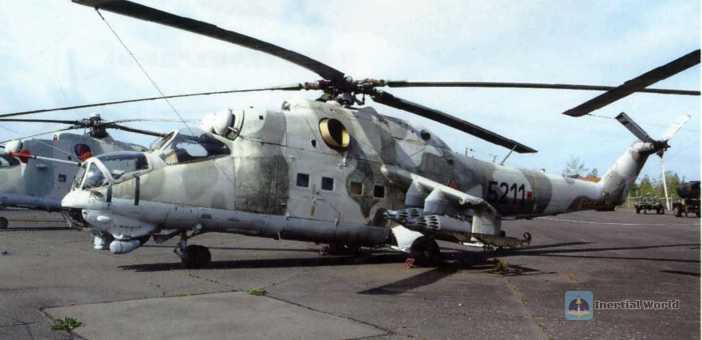
The East German transitional government (established in March 1990) listened to the instigation of Western politicians and stopped purchasing any weapons and equipment from the Soviet Union at the cost of paying huge compensation. After the reunification of the two Germanys, the East German People’s Army no longer existed, and the original military equipment naturally belonged to the federal government army. The armed helicopters were temporarily unified into the Eastern Squadron of the Army Aviation. The German government refused to participate in the Gulf War. As one of the measures to appease the emotions of the United States, it presented the United States with one Mi-24D and one Mi-24P. The remaining Mi-24s were retained for a period of time and were widely tested, but no systematic personnel training was carried out. In fact, as early as the 1960s, there was a debate within the West German government on whether it was necessary to introduce armed helicopters. As a result, it evolved into a dispute over the status of the Air Force and the Army, that is, who was more qualified to provide air support for ground forces. The traditional idea that the Air Force intends to control the sky forever is deeply rooted. In the end, the Army Aviation only retained a small number of helicopters for rear cover. The PAH-1 developed on the basis of Bo-105 has good anti-tank combat capabilities, but other aspects are unremarkable.
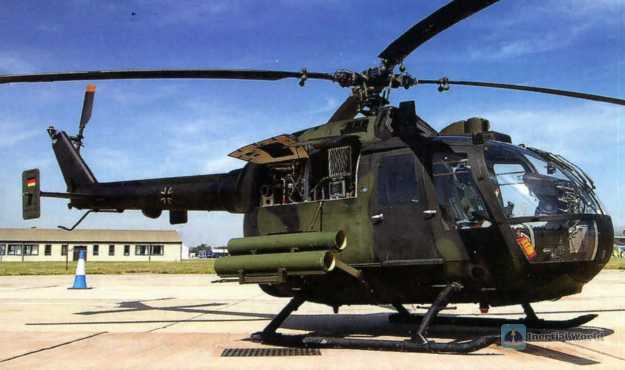
Internal sales
The rigid and conservative military leaders are very resistant to attack helicopters in concept. The relevant topic has become a taboo for a time, and they have turned a blind eye to the development trends abroad. The research and development of the next generation of armed helicopters (PAH-2) only requires good anti-tank capabilities.
As the shortage of spare parts became increasingly prominent, Germany began to "give" some Mi-24s to East Germany’s former Warsaw Pact allies in 1993. For example, Hungary received 20 (14 -24, 6 -24P). In fact, the latter had a large number of Mi-24s during the Cold War. The first Hungarian to receive the aircraft was the Army’s MN 6690 Aviation Regiment. The Ministry of Defense sent personnel to the Frunze Flight Academy for training in February 1978, and completed the first batch of 4 aircraft (005~008) on August 24 of that year. The subsequent three-digit numbers starting with 1 and 5, although they all belong to the Mi-24D family, there are still minor differences, such as the 500 series has more complete infrared decoys and warning equipment. For the aviation regiment, the training of unguided rockets is not difficult, but the launch of missiles requires a long time of training, and the use of machine guns is not easy to master. It was not until more than a year after the equipment was put into live-fire shooting. The maneuverability is certainly a big step up from the Mi-8. The aircraft has performed stably in various exercises and the Budapest National Defense Day over the years. However, if the force on the lever is slightly greater, the nose of the aircraft may pitch up sharply, resulting in a decrease in maneuverability.
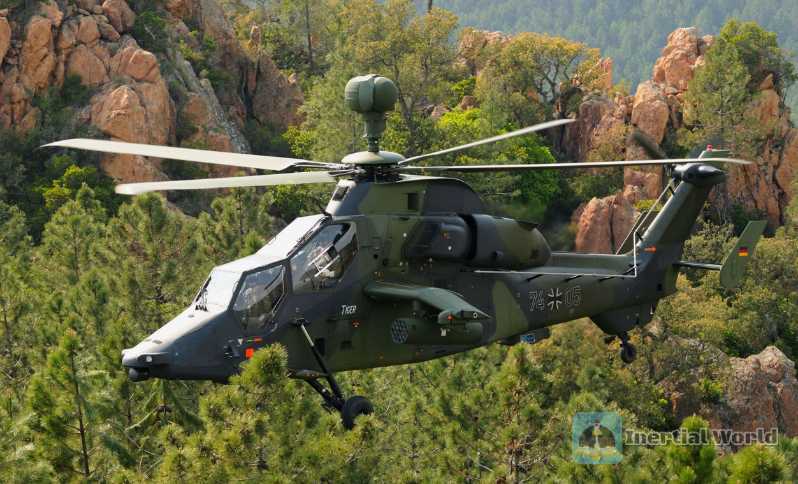
In the following years, the number of crew members returning from the Soviet Union after studying abroad increased day by day. Aviation colleges in places such as Szolnok in China were also able to train relevant technical personnel. What made them proud was that they generally did not need to be equipped with random engineers on board, which was ahead of other importing countries. In 1984, the country changed the original aviation regiment to the 187th Combat Helicopter Regiment and began to introduce Mi-24B the following year. Because there were many new things to learn and the weapons had to be adapted again, the technicians had to be sent to the training institution in Frunze. The regiment was expanded to brigade-level in 1987, but for financial and personnel considerations, it always maintained a staff of two squadrons. At its peak, it had about 70 helicopters, including 39 armed helicopters, becoming the unit with the strongest firepower in the army except for the tactical missile force. The annual average flight hours of Mi-24 also ranked first.
Like East Germany, in the late 1980s, civilian small planes would occasionally intrude into the airspace on the western border. The Hungarian military also used this aircraft for border patrol, called the Csepreg-2 plan, because using jet fighters was too expensive and ineffective. The Mi-24s that took off to intercept were usually equipped with rockets and machine guns. Once they found a "sly" little sly person, they would use heavy firepower to warn him. Of course, after the disintegration of the Warsaw Pact, this mission was nominally canceled, but the Mi-24’s air defense patrols continued for several years. In 1991 alone, the combat readiness alert level was raised dozens of times, including an Austrian plane that was forced to land across the border into the air base. When Pope John Paul II visited Hungary in 1991, his entourage took the Army Aviation helicopter, and the Mi-24 also provided personal protection. When the troops could not mobilize more Mi-8s or Mi-17s, they would also send Mi-24s for emergency rescue.
The factories responsible for maintenance in Hungary are mainly the later Danube Aircraft Factory and the Kecskemét Aircraft Repair Factory. The latter upgraded the front cabin of the old Mi-24 because it was found that the equipment in the cabin was relatively simple and could not complete certain training. Later, in 1989, it replaced the Russian-style related equipment with a more advanced domestic SZIROM data recorder. After the political reform, it was changed from a brigade to a regiment. Due to the difficulty in supplying spare parts and the serious shortage of funds, the average annual flight hours were repeatedly compressed. By the mid-1990s, only more than half of the Mi-24s that could fly were left. Pilot training was also unsustainable in the early 21st century. Most helicopter unit personnel were unwilling to stay in the unit, and there was a particular shortage of weapon operators. Only some young ground crew could be trained in the direction of crew. It seems that the only thing worth comforting is that the naming freedom of combat units is completely liberalized. The two helicopter squadrons were named Phoenix and Hunter respectively. The two units responsible for maintenance were Black Sheep and Red Dragon. Later, they were reorganized into multiple battalions, and the deployment of ground and air crew personnel was more flexible.
The authorities decided to close the Szentkirajsa Badja base in 2003. After the reorganization of the troops, the 86th Helicopter Regiment was reorganized in Szolnok, with a Mi-24 combat helicopter battalion under its jurisdiction. Most of the crew members were young Mi-8 pilots. However, these Mi-24s were used more for performances abroad, winning numerous awards in Germany, Belgium, Italy, and France, and won intoxicating applause. In addition, they also participated in the filming of action blockbusters over Budapest. Of course, such performances are also of practical significance. At least they can enhance the adaptability to modern navigation more quickly and adapt to high-frequency transfer training. However, as time goes by, spare parts are getting fewer and fewer. In fact, most Mi-24s can no longer take off, and most pilots can only fly Mi-8. But during the Afghan War, Hungarian pilots were incorporated into the air mentor team to guide Afghan government pilots to fly Mi-24. In addition to flying personally, there were also classes on site at the base-a so-called "doghouse" was opened in the rear cabin to observe whether the trainees’ movements were correct (ended in 2013).
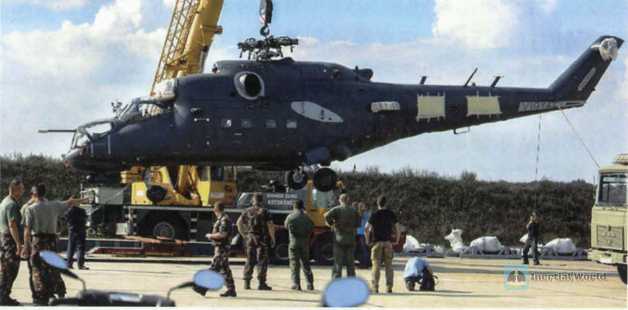
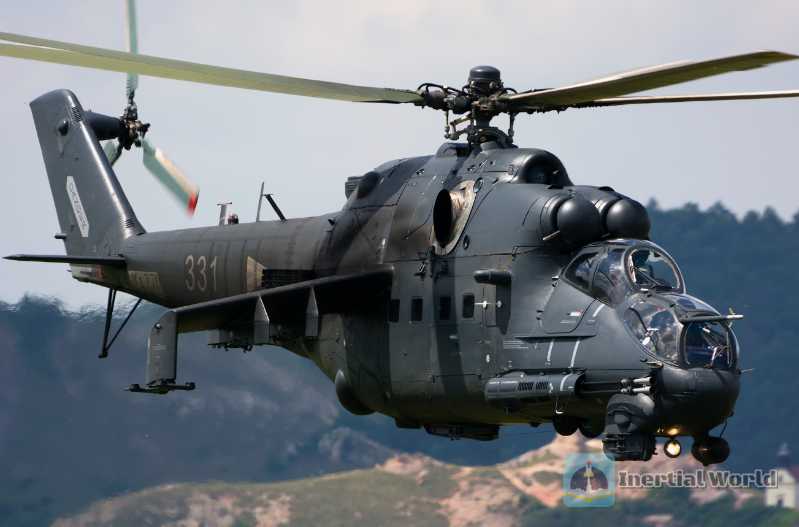
Poland, another recipient country, is also one of the important users of Mi-24D. In June 1979, on the anniversary of the first anniversary of the Polish astronaut’s flight to space (in Döblin), many aircraft including the Mi-24 were exhibited to the public. Like the Soviet Union, Poland also paid close attention to the new military technology trends that emerged during the Vietnam War. The active presence of US military helicopters in Vietnam, which was flooded in major media, aroused great interest from the Polish military. In the late 1960s, the Polish Military Technical Academy and the Swidnik Factory used the Mi-2 to transform several light armed helicopters. Among them, the Mi-2URP can carry anti-tank missiles. However, after all, the Mi-2 platform is based on civilian targets, with weak armor and very limited mounting capacity, which can only be regarded as better than nothing. However, in the 1977 Warsaw Pact joint armed forces comprehensive exercise field, the performance of Polish pilots surpassed their Soviet counterparts equipped with the latest Mi-24D (referring to the 172nd Independent Combat Helicopter Regiment stationed in Paschim, East Germany at the time).
There is no doubt that the combat performance of the Mi-24 is far superior to the armed version of the Mi-2 that Poland has tinkered with. In the mid-1970s, the Polish authorities decided to significantly update their aviation equipment, and the purchase of the Mi-24D became one of the important contents. In the spring of 1978, the military selected 10 pilots and 24 technicians from the 37th Transport Helicopter Regiment to go to the Soviet Union for training. Theoretical learning and practical operation began on April 28 and ended on July 3. The first batch of four new aircraft (A1013~1016) arrived at Leznica Wielka, the location of the helicopter regiment, on September 20 of that year. In the first stage, only theoretical learning could be carried out, because there were not enough instructors to train new pilots. In addition, the arrival of the Mi-24 put forward new requirements for the organization of the troops. The Air Force issued an order on November 28 to form an armed helicopter unit based on the 37th Regiment. It was officially established on New Year’s Day of the following year. System training was carried out by Captain Yevgeny Goliunov of the Soviet side. The first independent flight of a Polish pilot was on January 11, 1979. Only three months later, the first combat formation flight was completed over the Swedwin Airport. However, the aircraft was still strictly confidential at the time. The airport set aside a special parking area for them and arranged armed sentries. Only a few pilots and technicians could approach it, and most military personnel did not know its exact name at all.
Of course, the aircraft could not be kept secret for a long time. The location of Svedwin was not very remote. Soon after, it became a hot topic among local residents, so the anniversary mentioned above was officially made public. By the second half of 1979, the flight regiment had reached combat status and was tested in the "Happy 79" exercise in the autumn of that year. Polish audiences saw this latest equipment on TV for the first time. The photos that were officially allowed did not start to flow until the spring of 1981, and were published in air force publications and other media. It was the first time that the West knew that Poland was equipped with this aircraft. After joining NATO, Poland actively responded to the call of the United States. The Mi-24 fleet went to the Iraqi battlefield in 2004, and participated in the strike against the Taliban in Afghanistan since 2008, and was very active in supporting the country’s ground operations. All of this was seen by the friendly German forces, and it was really mixed. You know, a considerable part of them were purchased at a low price from the East German inventory, and the Germans themselves could only call the Americans for air cover. Currently, the 1st Brigade of the Polish Air Force has about 28 Mi-24 and Mi-24B, distributed in two bases - Inowrocław and Gdansk Pruszczy. It is expected to be completely retired around 2022 and replaced by AH-1Z or AH-64.
Bulgaria began to receive armed helicopters in June 1979. The 99th Tactical Aviation Regiment formed the 13th Combat Helicopter Regiment, which was equipped with a total of 38 Mi-24 and 6 Mi-24B in about six years. The two squadrons are based in Stara Zagra and Targovishte respectively. Except for the emblem, these Mi-24s are painted similar to the Soviet and Czechoslovak Air Forces. They also appeared at the 83rd anniversary celebration of the establishment of the Air Force in mid-October 1996. The country’s Mi-24 flight safety record is quite good. As of the beginning of the 21st century, there was only one fatal accident on January 18, 1996. According to reports, Russia planned to give 12 remaining Mi-24Ds in inventory to the Bulgarian Air Force in August 1995, but was flatly rejected by the Bulgarian side - the aircraft was in too poor condition, posing a threat to the safety record, and it would cost another $10 million to overhaul it, which was not worth it! This move may have angered Russia, and later the country’s Mi-24 upgrade plan was also obstructed by Russia in many ways. As of the beginning of 2010, the remaining 12 Mi-24IIs and 6 Mi-24Bs were all grounded due to approaching the end of their service life, and the two squadrons have switched to the Eurocopter EC-725 "Cougar".
Although theoretically it has good all-weather combat capabilities, the Mi-24s of the Warsaw Pact were actually strictly restricted in their night combat capabilities. Experts from Hungary and other countries tried to break through the rules and regulations. Due to the high price of missiles, night combat training was mostly completed through simulators. By the mid-1990s, some countries had developed their own matching laser devices. Although eager to align with NATO, the evaluation of Mi-24 and other easy-to-use and inexpensive aviation equipment was not bad, and they would try their best to retain them as long as the economy allowed. After the disintegration of the alliance, these Mi-24s were divided up by various countries. Croatia had about 30 Mi-24D at most, which were incorporated into the 29th Combat Helicopter Squadron to suppress Serb guerrillas. The onboard weapons were varied, and even Mk 44 torpedoes were hung. In fact, the United Nations paid Ukrainian pilots to participate in peacekeeping (US$2,900 per flight hour). The total contract amount for the first half of the year was US$8 million. Ukraine sent a total of 2 squadrons of armed helicopters, and the peacekeeping operation was extended from one year to two years. Macedonia is the former member state that has retained the aircraft for the longest time, using it to fight Albanians and Kosovo insurgents in the country. But Macedonia’s Mi-24 is actually not related to heritage. All 12 were bought from Ukraine in 2001, including 10 Mi-24Bs and 2 Mi-24Ks.
The Czechoslovak Air Force, which also undertakes ground support combat missions, also began to receive the first batch of Mi-24s in September 1978, and had combat capabilities the following year. In May 1980, the 2nd Squadron of the 51st Helicopter Regiment (nicknamed "Black Panther") had completed a flight show over Prague Square. In September 1983, the troops were reorganized, and two years later, the 11th Helicopter Regiment was established. Later, Slovakia’s Slijač also established the 4th Helicopter Regiment. After the peaceful split, the Czech Republic received 2/3 of the Mi-24, and the rest belonged to Slovakia. As of the millennium, the total number of Czech Mi-24D/B was about 40, including 7 delivered by Russia in 1999 to repay debts. After that, all these helicopters were assigned to the 331st Attack Helicopter Squadron of the Eastern Helicopter Base.
For many years, the fancy-painted Czech Mi-24 has been a frequent visitor to various air shows, and various aerobatic flights have dazzled the ground audience, but due to the lack of spare parts supply from Russia, the Czech Republic plans to completely withdraw the Mi-24/35 by 2018. At this time, Iraq showed great interest in this batch of armed helicopters in good condition. In recent years, Iraq has faced severe challenges from Isis, and the security situation is still not optimistic. European and American weapons are not only expensive but also attached with many political conditions, while the Russian-made Mi-24, especially the second-hand early batches, are much cheaper.
Asia and Africa have purchased a lot of Mi-24s
Of course, Iraq introduced a batch of Mi-25s as early as the late 1970s. During the Iran-Iraq War, according to rough statistics, there were about 118 battles with fixed-wing aircraft, and 56 direct encounters with helicopters, and at least 7 of them were shot down. Most air battles are accidental encounters. If the Iranian AH-1J Sea Cobra discovers the enemy first, it will choose to attack with TOW missiles. If it fails, it will detach as soon as possible or call on nearby Iranian fighters to come forward to help. Iraq will look for opportunities to stare at the lone Sea Cobra. The Mi-24 will first climb to more than 1,000 meters and then launch a dive attack from the rear. November 1980 was the first direct confrontation between the main helicopters of both sides. Iraqi Mi-24 was shot down and damaged without any preparation. On April 24 of the following year, two more Mi-24s were shot down by AH-1J. However, on September 14, 1983, the wind seemed to turn around and Mi-24 won the first AH-1J victory. The Mi-24 won a few more times. After that, both sides seemed to have their own wins and losses until the last "snake-deer battle" on May 22, 1986, when Mi-24 had a slight advantage. What is more worthy of boasting is that on October 27, 1982, a Mi-25 actually used an anti-tank missile (some say it used a machine gun) to shoot down an F-4D Phantom-II fighter of the Iranian Air Force, but this victory was largely accidental. Mi-25 was also active during the Gulf War, but the loss is unknown. It is reported that there were about 30 left by 1995 (some say there were 50 left by 2001). Neighboring Syria bought 50 second-hand Mi-24Ds to equip its air force in the early years. As of the beginning of the 21st century, there were 36 remaining. Since the outbreak of the civil war, the air force has suffered great losses, and the number is difficult to count in time. According to Western media, the total number is about 28. The Syrian army’s tactics of using Mi-25s are said to be very different from those of the Russian side. In most cases, it acts as a bomber to drop 250 kg bombs. In order to avoid low-altitude light weapons, the flight altitude is relatively high, and in order to obtain a higher hit rate, the speed is also slowed down accordingly. Among the North African countries, the Ethiopian Air Force also received 40 Mi-24Ds in 1978, and bought a batch of brand new Mi-35s in 1988, but the losses were rapid, and more than half of them were lost in 1995. In December 1998, Russia announced that it intended to deliver 10 second-hand machines to the country through relevant export agreements, but Ethiopia declined the sales promotion because it was dissatisfied with Russia’s simultaneous provision of arms to Eritrea.
If you count them, African countries are equipped with this aircraft, accounting for more than half of the total number of importing countries. Some countries, relying on their geographical advantages and oil sales revenue, once stockpiled a large number of them, such as Libya in the 1980s. The Air Force had about 65 Mi-24A and Mi-25 in the mid-1990s, but due to the implementation of the UN embargo agreement, a large number of them were grounded in just a few years. After the sanctions were lifted, Russia once considered resuming the supply of Mi-24 to the country, but it was not implemented. Rwanda and Sierra Leone, where bloody civil wars broke out that year, were also equipped with a small number of Mi-24s. The specific number is unknown (it should not exceed 5), and it seems that the channels are not regular. Sierra Leone mainly comes from the former Soviet republics (Belarus and Ukraine). Zimbabwe, which supports the Democratic Republic of the Congo, announced on April 8, 1999 that the Air Force purchased 10 helicopters from Russia, of which about 4 belonged to the Mi-35 series. Soon after, the Russian side also modified them for all-weather use, equipped with Garmin global positioning system and IRTV-445MGⅡ thermal imaging system. The batch in the Democratic Republic of the Congo (then called Zaire) should have come from the CIS countries. One of them crashed into a telephone pole on March 27, 1997, and the second batch was obtained in 2000.
The neighboring Republic of Congo was reportedly also equipped with the aircraft and put into actual combat in 1997. The Russian Ministry of Foreign Affairs denied that the country was equipped with the aircraft, but in any case, Congo obtained a small number of Mi-24P (some say Mi-24B) from Ukraine in 2005. Another user that has not been confirmed for a long time is Sudan at that time. It was once reported that the country was equipped with 20 aircraft, but the Soviet Union did not list the country as a "friendly country" at that time. Therefore, if the number is reliable, it is likely that it was seized from the Libyan Air Force in July 1983. The Mi-24 model owned by Mozambique is unknown, and the specific number is also different. The outside world reported 15, but only 4 can be confirmed. Uganda also spent 3 million US dollars to import two Mi-24s from Belarus in early 1998. Because the aircraft was in poor condition and not overhauled as agreed, Uganda claimed to return the aircraft on Consumer Rights Day in 1999 unless Belarus could deliver new aircraft within three weeks. The two sides argued over this issue. Belarus recommended the Mil Design Bureau to Uganda, believing that the overhaul would only cost 400,000 US dollars, but Uganda flatly refused and insisted on its original claim of return. In recent years, several new African users have been added, and they usually only buy two aircraft, such as Namibia (Mi-25), Burkina Faso (Mi-35), and Senegal (Mi-35P), while the Mi-24Bs in Burundi and Djibouti have been used in peacekeeping operations.
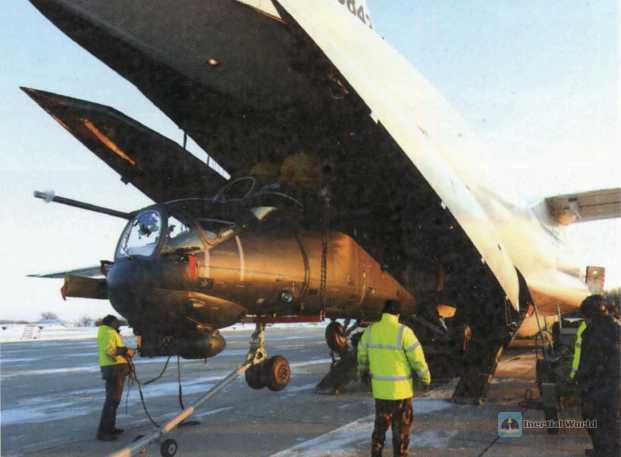
The preservation status of some users in Asia-Pacific countries is not ideal. For example, the 916th Regiment of the Vietnamese Air Force equipped more than 30 Mi-24A/D, some of which were later transferred to Cambodia. The latter rarely put them into training due to lack of maintenance capabilities. The Mongolian Air Force has about 12 second-hand Soviet aircraft. They were not overhauled when they were first delivered. Most of the old paint and markings are still there. In just a few years, they have changed beyond recognition. North Korea is said to have a stockpile of about 50 aircraft at one time, but the number announced to the public seems to be only 20, and the exact number is impossible to count. The Indonesian Ministry of Defense ordered a batch of Mi-35P in 2003. Although the number was small, it was not until 2010 that all of them were delivered to equip the 31st Squadron. In order to eliminate the separatist armed forces in Bougainville, Papua New Guinea purchased a batch of Mi-24s from Eastern European countries through a defense consulting agency in the UK, and leased Russia’s An-124s to Port Moresby. Later, Papua New Guinea tried to purchase a second batch of helicopters but was blocked halfway. The Australian Air Force dispatched Hornet fighter jets to force the An-124 carrying Mi-24s and Mi-17s to land. As a military purchase during the tenure of the overthrown former leader, the new government adopted a passive resistance attitude.
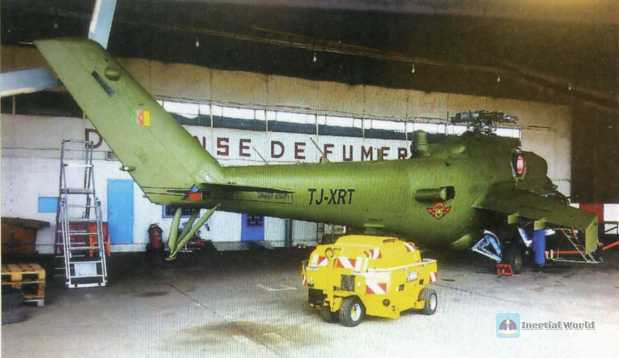

The most critical Asian user is of course India. The first time was the introduction of 12 Mi-25s at the end of 1984, equipped with the 125th Helicopter Unit, and later purchased 20 Mi-35s. By the end of the 20th century, a total of 60 (some say 75) Mi-24s of various types were in service in the Indian Air Force, and the country’s air force called it Akbar. It is worth mentioning that the trainer model purchased by India is different from the Mi-24Dy. The 9M114 missile is hung on the end of its short wing, which should be tailor-made for India. The Mi-25, which had just taken over the Indian Army, was used to fight against the Pakistani Army. Since the 1970s, the Indian Ocean island nation of Sri Lanka has been caught in a long and bloody civil war with the Tigers. In the fall of 1987, the Indian Air Force also participated in the fight against the Tigers in Sri Lanka, cutting off the latter’s communication lines, sinking its weapons transport ships, and escorting friendly Mi-8/-17. But in these peacekeeping operations, the Mi-25 and Mi-35 only used rockets because there were no high-value targets worthy of using anti-tank missiles.
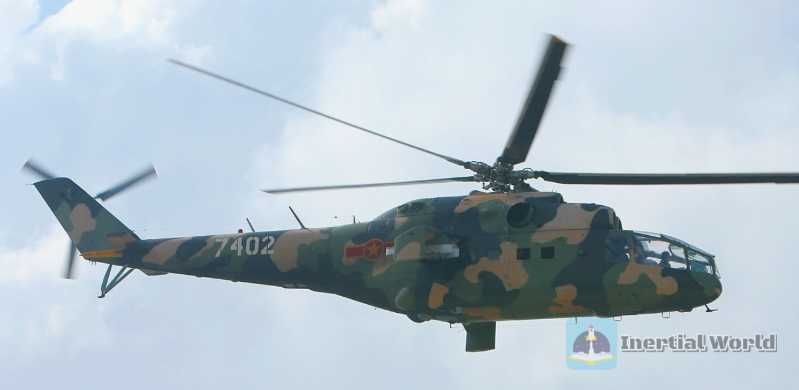
The Sri Lankan Air Force obtained a batch of second-hand Mi-24Bs from CIS countries in November 1995 and equipped the 9th Attack Helicopter Squadron. One source claims that it came from Kazakhstan, and another source claims that it was leased from Ukraine. There is no Sri Lankan emblem on the whole body, only a simple serial number (usually starting with the letter CH). Sri Lanka put the aircraft into combat patrol on November 14 of that year, and achieved certain results in the "Sunshine Operation". On March 19, 1997, one was shot down in Mullaitivu in the Bay of Bengal, and another was lost for some reason on November 10 of that year. The remaining three aircraft were repaired in Ukraine and put back into combat in the summer of 1998. At the same time, the government army purchased three more Mi-35s from Russia in March of that year (two of which were Mi-35P), and then introduced two early models from Ukraine. As of March 2000, the Air Force had a total of 12 Mi-24s of various types. Except for one aircraft shot down by a shoulder-fired missile of anti-government armed forces on December 17, 1999, killing all four people on board, three aircraft were lost in 2000, and the government army urgently added three Mi-35P from Ukraine.
Brotherly competition
Ukraine, which dumps second-hand military equipment abroad, has a hard time for its domestic aviation force. Independence movements broke out in many places in the country, and the Ukrainian army could only respond hastily. In early April, the training intensity of the air force increased sharply, but the effect of sharpening the gun before the battle was limited after all. The long-term disuse of military equipment led to the army’s combat effectiveness being stretched. At that time, the Army Aviation had a total of three combat units-the 11th Independent Brigade of Kherson, the 16th Independent Brigade of Brody, and the 7th Independent Brigade of Novokalinov. The main equipment was various types of Mi-8 and Mi-24. Many bases that had been abandoned for many years were requisitioned. The Kmatovsky-Slavyansk region became the focus of fierce competition between the two sides. The Ukrainian army sent assault teams through Mi-8s, and the Mi-24s provided cover, and conducted reconnaissance in nearby areas. In early May, the fighting intensified again. The helicopters of the 16th Brigade provided support to the troops trying to occupy the TV tower on the top of Karachun Mountain. As a result, two Mi-24s were shot down by the opposition armed forces with shoulder-fired missiles, killing many officers on board and taking the captain Krasnokutsky prisoner. Speaking of the Western countries’ intervention in the Balkan Civil War, the new provisional government of Eastern Slovenia was established in June 1996. The Ukrainian Army Aviation also dispatched 6 Mi-24P helicopters (nicknamed "White Crocodiles") to establish a military buffer zone, which was also a moment of glory.
Ukraine later developed the -117BMA-CБM1 based on the TB3-117BMA. Although it was successfully put into production in 2010, the original plan to sell it to Russia was ruined due to political reasons, and it could only be used on its own Mi-17 and Mi-24 improved versions. At the same time, in order to get rid of its dependence on Ukraine’s power, Russia is also actively preparing for a new helicopter power research and development project, but the first step can only start with importing spare parts from Ukraine. After that, Klimov independently upgraded the -117BMA and gave it a new name BK-2500 (BK is the abbreviation of Vasily Klimov). The relevant tests of Mil began at the end of May 2000. The initial development progress was relatively slow, but after the deterioration of Russian-Ukrainian relations, BK-2500 accelerated its development pace and was officially approved in 2012. After mass production, BK-2500 will use all domestic components, and it is planned to reach an annual output of 350 units by 2017. At the same time, the more powerful BK-2500-2 and BK-2500M will be launched, which will not only meet domestic needs, but also be exported. The expected life of this engine can reach 7,500 flight hours, and its weight and rated power are comparable to -C6M1, but the emergency power and 30-minute maximum power indicators are slightly lower than the Ukrainian product.
In the Soviet era, Mi-24 overhaul factories were built in Voroshilovgrad (now Luhansk) and Konotop, which is exactly the confidence of Ukraine to transform and sell Mi-24. Ukraine not only sold a large number of surplus Mi-24s to foreign countries (Chad bought two Mi-24Bs from it in 2000), but also relied on its impressive aviation industry strength to carry out special transformation of Mi-24P and built a Mi-24Py1, trying to replace Russian products with domestic parts. There is no change on the outside of the fuselage, mainly the engine has become the TB3-117BMA-CБMB-02 of the Motor Sich Engine Plant, and there are some changes in the cockpit, with a navigation system supporting GPS and improved radio equipment installed. A laser target seeker is installed above the optical target interception system, near the muzzle, and it is also equipped with a newly developed Adros KT-01A B self-defense system, which is specifically designed to counter infrared missiles. Data shows that this model also participated in the suppression of the independent armed movement in the east. It is said that the self-defense system is very effective, but there are still records of being shot down by the opponent’s shoulder-fired missiles.
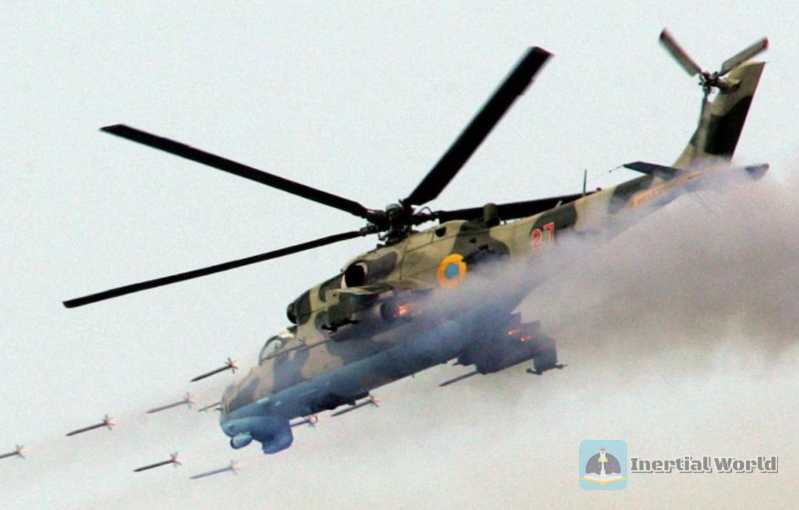
The Soviet troops stationed in Tschinvali withdrew from the base after the disintegration of the alliance, leaving 40 Mi-24D/B helicopters for Georgia. Two were lost in the Abkhaz war, and the rest were well preserved. Data shows that the Georgian Air Force’s 20 or so Mi-24 series in service are all from Ukraine. The relationship between the two countries and Russia has been completely antagonistic in recent years, and they can only choose to keep each other warm. However, Georgia is currently actively moving closer to the West, and it is only a matter of time before it is replaced by American helicopters. But CIS countries like Belarus, which are friendly with Russia, do not need to do this. Their Mi-24 and other aviation equipment have long maintained the Soviet-era paint unchanged. According to statistics, by the end of the millennium, there were a total of 76 Mi-24s of various types. The largest number of them was stationed at the Northwest Base in Polotsk, where 38 Mi-24Bs and -24s were stationed at one time. There was also a considerable number of Mi-24s at the Prozhany Base. Armenia is not large in area. In its heyday, it was said that there were nearly 100 Mi-24s of various types (24Д/B/K/), but unfortunately, there were few left after the Nagorno-Karabakh War; Moldova, the smallest member state, also had about 30, and the three Baltic countries seemed to have cleared their inventory early, while the Central Asian countries with many inland locations had a fairly complete formation. It can be said that the Mi-24 created an insurmountable peak in the export of Soviet and Russian armed helicopters. After entering the 21st century, it is still in hot demand. In addition to the newly-made Mi-35M/M2, Mi-35 also launched a number of modification packages to attract new and old users at different levels. One of the key targets is the Indian Air Force. Through cooperation with Israel’s IAI company, a total of 25 Indian Air Force Mi-35s were upgraded to the Mission-24 level by 1999. In recent years, the Mi-35M has been vigorously promoted in South America and has received corresponding returns. In 2008, the Brazilian Air Force signed a contract with Russia to purchase 12 Mi-35M4 (called AH-2 "Saber") helicopters equipped with Israeli avionics, which were delivered in four batches (the last batch was completed in November 2014). For Russia, exporting mainstream aviation equipment to the largest country in South America is of extraordinary significance. The outside world observed that after this, the military and technical cooperation between the two countries has become increasingly frequent. These aircraft were delivered at the end of 2009 and officially entered service in April 2010. They were equipped with the 2nd Squadron (Bodie Squadron) of the 8th Aviation Regiment of Rondonia in the north. They were not mainly used to deal with potential enemy ground armored forces, and there was really no regular force threat worth mentioning in the surrounding area. However, cross-border smuggling and drug trafficking operations are a headache. With the AH-2, precise positioning and effective strikes can be implemented. The manned cabin became the key to the Mi-35’s final victory over the Tiger and the Mongoose.
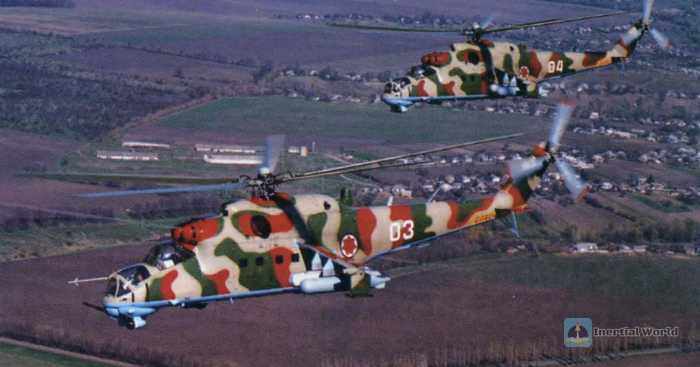
The squadron base is deployed near the Bolivian border. Once a conflict breaks out, the AH-2 is also an important airspace deterrent. It can penetrate 800 mm homogeneous steel armor like the 9K120 anti-tank missile, and any tanks of neighboring countries are no problem. But Brazil has higher expectations for the AH-2, and even requires it to be used in helicopter air combat. In the past, it was done with the AS350 "Squirrel", while the AH-2 needs to fight one against two, and is also required to fight the A.29 Super Tucano. So far, the troops have held several comprehensive exercises code-named "Blowing Arrows". Adapting to the tropical jungle environment is the first step that the AH-2 needs to take. For the troops, using night operations as much as possible can greatly reduce the risk of being attacked by shoulder-fired missiles. Of course, Brazil has a vast territory, and the total number of armed helicopters is limited, so the squadron’s AH-2 is often deployed to temporary bases thousands of miles away. This is also a necessary test of the helicopter’s ability to adapt to the environment, because the conditions of these temporary bases are very simple, and the supplies must be transported by C-130.


In fact, the only armed helicopter in South America is the Mi-24, and its primary task is more to fight against non-state criminal organizations. Northern neighbors Peru and Brazil face the same problem. Their Mi-25 is actually equivalent to a "high-level police helicopter", or more accurately, it is used to combat drug trafficking. As early as 1982, Peru signed a contract with the Soviet Union to purchase 12 helicopters (in two batches). In 1992, it purchased 7 second-hand helicopters from Nicaragua (one of which was dismantled for spare parts). The 2nd Air Force Regiment established the 211th Squadron in 1983 to receive these helicopters, and its base is located in Vitor, Arequipa Province in the south. During the service period, three aircraft were scrapped due to accidents or disasters. In addition, one aircraft (FAP-646) was shot down by the enemy’s air defense forces during the armed conflict with neighboring Ecuador on February 7, 1995. As of 2010, there were only 16 aircraft left in the squadron, less than half of which could fly. So in that year, the government spent 20 million US dollars and signed a major overhaul contract with the Russian Arms Import and Export Corporation for 6 Mi-25s, mainly to replace new engines, but before it was implemented, the corruption of the contract had already spread.
Many competitors
In fact, after the disintegration of the Soviet Union, although the Mi-24 did not stop production and became a key export equipment, its export performance was not satisfactory, especially for Russia. The main reason is the emergence of several foreign companies competing with Russian companies, especially the Advanced Technology and Engineering Company of Midland, South Africa, or ATE Group. Algeria reportedly purchased 40 of the group’s "Super Hind" 3 in 1999 and delivered them that year. Just five years later, these South African modified Mi-24s have accumulated 14,000 flight hours, and Algeria actually added a batch of higher-end orders in 2002, but the number was not disclosed.
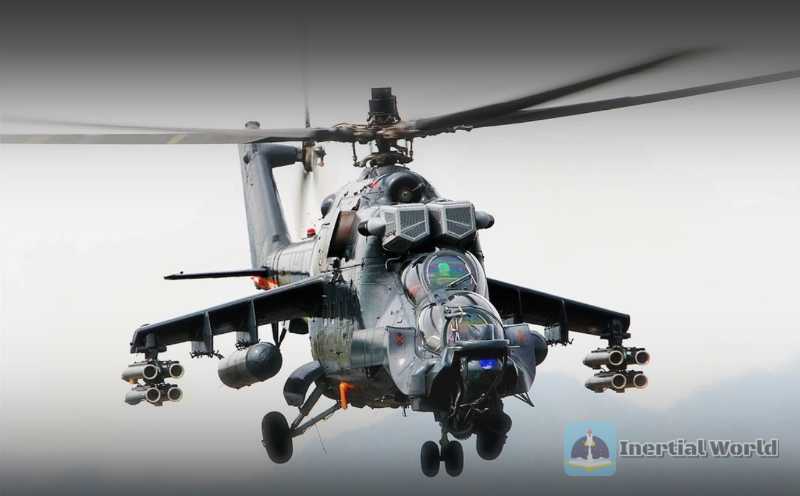
The low-level version Mk I is mainly dedicated to updating the sighting and precision navigation equipment of the Mi-35P, while the original Russian weapons are basically retained. The high-level Mk3 system uses South African products in its weapon system, replacing the original four-barrel 12.7mm machine gun with a 20mm cannon. The Phalanx-P and Storm-B missiles will also be replaced by Kentron’s ZT-35 "Leopard". The lower end of the improved wing tip is equipped with a four-unit launcher in a field shape. Each "Doe" can carry 8 ZT-35s, and the inner rack can choose Russian or South African conventional bombs and various rockets. The Leopard missile fired 400 rounds during the airborne certification stage, with a hit rate of 90%. The cannon fired a total of about 100,000 rounds.
The core avionics system developed by ATE Group is based on similar products on the Ishikawa Falcon armed helicopter. The mission computer forms a perfect link with various airborne equipment and is responsible for generating all navigation and weapon delivery data, including the working status of the night vision cockpit and formation lights and infrared controllable landing lights. The Argos 550 gyro-stabilized multi-sensor assembly developed by Kentron Kurumus includes an automatic tracker, a TV camera, a forward-looking infrared radar and a laser rangefinder. Both cockpits will be equipped with a new head-up display and a navigation display that meets the needs of night flights. The new self-defense system is mainly a Yunton programmable chaff-flare dispenser. In order to reduce the problem of excessive vibration under high-speed and low-speed flight conditions, it is also equipped with digital/optical blade balancing and tracking equipment. The higher version of MkⅢ also includes Kentron’s "Archer" R2 helmet sight, which can be linked with the Argos 550 sensor and control the high-speed steering turret at the end of the nose (20mm F2 aircraft cannon with 840 rounds of ammunition).
The first round of foreign sales activities did not seem to go smoothly. ATE originally planned to enter the Eastern European market and first chose Bulgaria, which had just joined NATO. Its French branch and local Bulgarian TEREM teamed up with another South African company, Lyconex (affiliated with ATL Group), to raise funds to start the upgrade and transformation demonstration project. The Mi-24 used as a modified prototype came from the inventory of the Bulgarian Air Force. The modification project was called "Sova-Attack", which was roughly similar to Mk Ⅲ. Several test flights were conducted between February and March 2005, but unfortunately no one was interested, so it had to be withdrawn sadly. In 2007, the Bulgarian Air Force once restarted the plan, but the Sova-Attack project still ended in failure. However, Bulgaria does not want to give up the Mil helicopter. In 2018, it launched a new round of bidding, intending to hire another expert to upgrade 4 Mi-24 Bs and 2 Mi-17s.
ATE Group was unwilling to fail. In September 2006, it publicly displayed a new version of the "Super Doe" Mk V at the African Aerospace/Defense Exhibition. It was once called the Agile "Doe". The front fuselage was completely redesigned and the classic stepped double bubble cockpit design was completely abandoned. The so-called Agile "Doe" is to reduce weight comprehensively to improve flight flexibility and meet the needs of flying close to the ground to the maximum extent. It is said that a total of 4,000 pounds, or 1,816 kilograms, has been reduced. In addition, the protective armor is concentrated around the crew. The combat radius is 235 kilometers when carrying 8 anti-tank missiles and 400 20mm shells. South Africa learned about the Mi-24 because of the influence of its neighbor Angola. The latter received Soviet aid that year and was equipped with more than 30 Mi-24 and Mi-24B aircraft. Its opponent, the "National Union for Independence" (UNITA), also purchased 6 aircraft in 1999. During the long-term war with Angola, South Africa developed a great interest in the Mi-24. ATE conducted in-depth research and upgrades on the captured Mi-24, not only expanding the African market, but also actively promoting the "Super Doe" to the former Warsaw Pact and Soviet republics. For example, Azerbaijan publicly unveiled its latest Mi-24G, the "Super Doe" Mk IV equipped with a gyro-stabilized sighting system, in a large-scale military exercise at the end of June 2010. This project was not completed independently by South Africa, but in cooperation with the Ukrainian Konotop Company. The avionics system can meet NATO standards.

One of the reasons why the South African project has received mediocre international response is that it does not receive support from Russia, the country of origin - the Mil Group believes that the nose has been changed too much, which has destroyed the stability of the center of gravity. In addition, it faces strong competition from European peers, such as the French Sagem Company, which has a strong accumulation in avionics and airborne systems and has a long-term cooperative relationship with Russia. As early as the 2001 Paris Air Show, Sagem had displayed the upgraded Mi-24P specially built for the Uzbek Air Force: each cockpit is equipped with a 152.5mm x 152.5mm color display, the night vision lighting system is matched with the CN2H night vision goggles developed by Sagem, and there is also a Sigma 95L precision navigation system, inertial navigation and GPS sensor data input, and a Mercator mapping system. The turret under the nose is equipped with a modernized Stryx sensor assembly, which integrates forward-looking infrared radar, closed-circuit television and laser rangefinder identification, which was originally used on the Tiger helicopter. Sagem later won the upgrade contract for 12 Mi-24P of the Uzbek Air Force, and cooperated with the Chkalov Aircraft Plant (TAПOИЧ) in Tashkent. In addition, the company also teamed up with the Mil Helicopter Plant and the Russian Arms Import and Export Group, and confidently entered the Eastern European market.
In fact, the first company to make a fortune from the "Doe" modification project should be the Israeli Defense Industries (IAI). As early as 1998, they signed a $20 million Mi-24/-35 upgrade and modification contract with the Indian Air Force, involving 25 Mi-24 helicopters. The company officially opened the project to the public in 1999, named Mission-24, and the market positioning is a low-cost sighting, navigation, self-defense, and protection solution. The kit modification is based on the 1553B military standard data bus, equipped with a single-mission computer and helicopter multi-mission optically stabilized payload (HMOSP) developed by IAI. The latter weighs about 30 kilograms and is based on the night aiming system developed by IAI’s Taman Division (once used in the US Marine Corps AH-1W Super Cobra). It completes day and night observation and aiming through television and forward-looking infrared radar. The spherical pod is also equipped with a laser rangefinder and an implanted automatic tracking unit. HMOSP includes two forward-looking infrared radars, a 4x480-unit low-band mercury cadmium telluride detector, and a medium-band 320x240-unit antimonide steel focal plane array, as well as black-and-white or color television cameras and laser rangefinders, plus an implanted automatic tracking unit using centroid and angle tracking technology). Both the front and rear cabins are compatible with night vision, and IAI advanced night vision equipment (integrated monocular display navigation and aiming information) can be selected. The original DICC-15 Doppler equipment is still retained, but a GPS receiver is added, and a 3D digital map display can be added. The self-defense system has also been further improved. The strip/bait dispenser is also an Israeli product. There is also an Elta radar, laser or missile warning system. The total weight of the whole set of equipment is about 50 kg. Equipped with a dedicated helmet sensor, the pilot can control the HMOSP through the change of perspective, and even operate the Yak-B machine gun, and the HMOSP can also be used directly for machine gun aiming. According to IAI’s propaganda, HMOSP can be perfectly compatible with the original Strike-B missile radio guidance system through a self-developed communication interface, and completely replace the bulky old Rainbow-Ф optical system. However, Russian media broke the news in 2002 that HMOSP encountered a series of guidance problems when used for Strike-B test firing. IAI had no choice but to seek help from the Russian designers, and KBI in Tula provided valuable support. Of course, there are other options. If it doesn’t work, you can use Israel’s "Spike" first, but after all, you have to spend money again, so it may be better to buy your own "Viper" missile.
The Russians also disliked the Israeli company Elbit. These Jews were too aggressive. As early as 2004-2005, they successfully entered the Sri Lankan market by adding anti-tank night combat and advanced self-defense components, which enabled the fleet to have real night vision capabilities and improved the self-defense system. Although the number was small (5 Mi-24Bs and Mi-24Ps), the Russian side was still cooperative at the time. The Israeli side also successfully obtained a contract for the modification of 4 Mi-24Bs from Macedonia, which met the NATO-ICAO navigation standards in three stages. The aircraft were equipped with Western equipment such as Collins’s Talon RT-8200 radio and ATE Group’s friend-or-foe identification. After Elbit announced the successful transformation of 12 Mi-24s and 6 Mi-17s in Bulgaria in early 2005, the Russian government and the arms export group could no longer sit still. At the end of that year, Elbit signed a second helicopter overhaul and life extension contract with the Bulgarian Air Force for a total amount of 57.2 million euros. The Russian government and several companies refused to provide the spare parts and related information required for the upgrade, resulting in the cancellation of the transaction in early 2007. The company returned part of the money (the part that had been delivered was not canceled or returned).
The Russian side reacted so strongly because they did the math and found that the contract amount was definitely a loss for the Russian side. Obviously, the Jews were losing money to gain publicity and wanted to further encroach on Russia’s military sales and transformation territory. Although Russia forced Elbit to mess things up, the previous Macedonian helicopter transformation contract gave Elbit a good opportunity to show off. These Mi-24Bs in Macedonia were previously overhauled at the Konotop Aircraft Repair Plant in Ukraine. After Elbit took over, it quickly formulated a three-step upgrade plan. First, they were installed with the ANVIS/HUD-24 system (i.e., the helmet display and aiming system combined with the AN/AVS-7 night vision goggle system) to make the cockpit compatible with night vision equipment, and a Trimble GPS receiver was added. Secondly, the NATO/ICAO standard navigation, communication and friend-or-foe identification equipment, a new self-defense auxiliary system, and two sets of multi-function displays for mobile digital maps and information transmitted from the compact multi-purpose advanced stabilization system IV turret and the hands-on stick controller. The final stage of the upgrade is to add a pilot helmet prompt system, which can be linked with the sensor turret and can be used to control the Yak-5 machine gun. Of course, the Russian side is not opposed to cooperating with European military industrial groups. As long as the Russian side’s transformation architecture is the main focus and it is profitable, the European avionics group’s joining will still have a positive effect on the Mi-24’s going global. At the Paris Air Show in June 2001, Sagem Company displayed the so-called Uzbek Mi-35P transformation results and used it as a model for night vision upgrades. In fact, the aircraft was not modified at the time, and the Ukrainian side did not actually promote the plan. The new owner Thales Company later did not seem to care about the project. Sagem later teamed up with Mil Helicopter Factory and Russian Weapon Import and Export Group to provide upgrade components that meet NATO standards for the four Eastern European countries that joined NATO - Czech Republic, Poland, Hungary, Slovakia, and Bulgaria. However, it was not recognized by customers, but the fat meat still attracted European wolves. The UK also wanted to get a piece of the pie. At the 2003 Paris Air Show, BAe proposed a Mi-24 transformation plan, but unfortunately, there were many onlookers and no one paid for it.
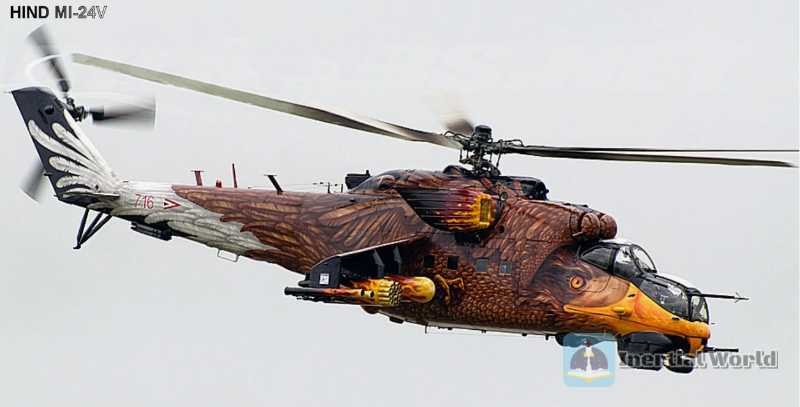
Old wine in new bottles has long become the main theme of Russia’s military exports. A few years ago, the Rostov plant made a fancy digital camouflage for the Mi-35M and showed it off at the air show (No. 2302). The aircraft is equipped with a hub shock ring, 9M120-1 "Attack"-BM, "Arrow"-BM/Needle-C and other missile weapons, as well as C-13 rockets using a five-tube launcher and 20-unit C-8 rocket launcher. At the 2019 Moscow Air Show, an improved version of the Mi-35 BP developed by Rostov and the Moscow Helicopter Research Institute appeared (the factory prototype number is 1108, currently only static display, no solo performance has been seen). Unlike the Mi-35M, this aircraft is equipped with a more advanced OPC-24H-1L system, and the supporting optoelectronic equipment is the TO9C-321MK third-generation thermal imaging and high-definition color camera and laser rangefinder. The navigation and electronic guidance device has also been upgraded to KHэИ-24E-1, and there are also ПpBK-24-2 computer system, ПKB-8-35 autopilot, multi-purpose color downward display, and better compatibility with various advanced anti-tank weapons. At the recent air show, the new 9K121M "Tornado"-M missile can also be used for this aircraft. The first batch of this missile was just delivered in October 2015. It uses automatic laser guidance and its maximum range can reach 10 kilometers.
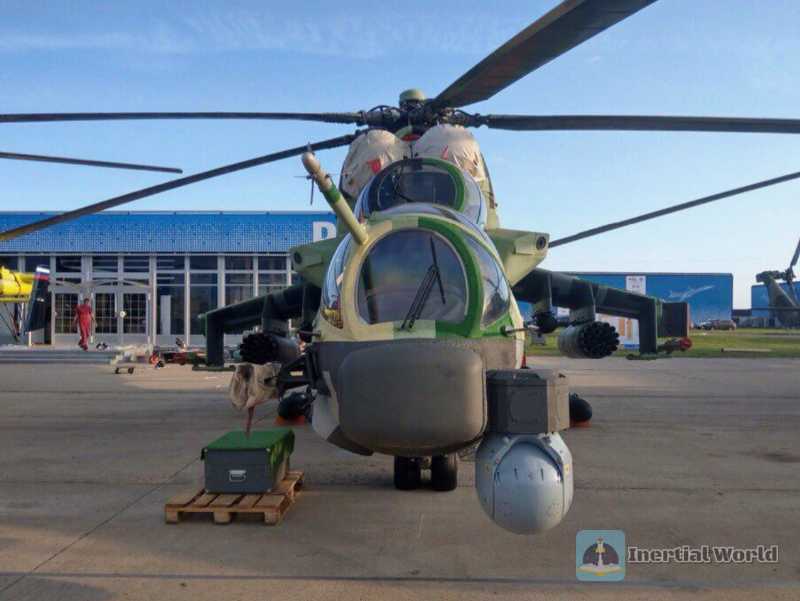
The official is very optimistic about its prospects. The state-owned helicopter technology company claims that this advanced armed helicopter will target Asian and African countries. Rostov is investing in mass production. The Radio Technology Group (KP9T) chose to cooperate with the Russian Helicopters Company and came up with a more attractive technology demonstration machine, the Mi-24P-1M, which was praised by the media as a digital Mi-24P. The group’s president revealed at the air show that the tactical indicators and performance requirements of the aircraft were all formulated by the Russian Ministry of Defense. The focus of the improvement is still on the optoelectronic system. It can be said that 90% of the avionics are new products, including fire control systems, communication systems, navigation equipment, full-range autopilots, and even active phased array radars (in the nose). According to existing data, the aircraft has effectively reduced its weight by 430 kg, providing enough space for the addition of equipment. The available weapon systems are equivalent to the Mi-35 mentioned above. At present, the Mi-24P-1M has not yet made its maiden flight. Target customers can use the Mi-24s currently in service for modification. In theory, the world’s 750 Mi-24s of various types (excluding the recently exported Mi-35M) have the opportunity to be modified into Mi-24P-1Ms. In short, the market prospects are bright, at least Russia thinks so.


